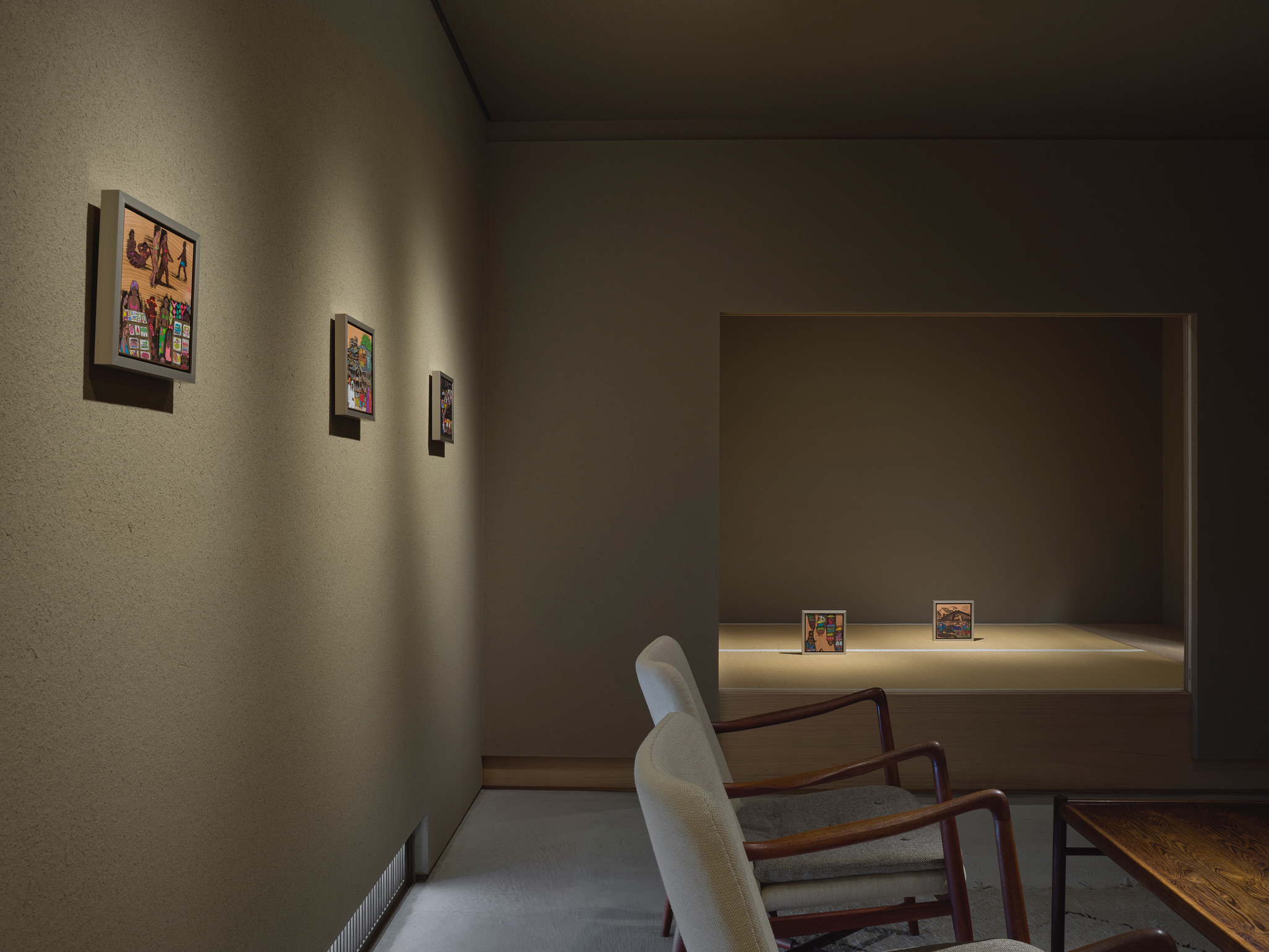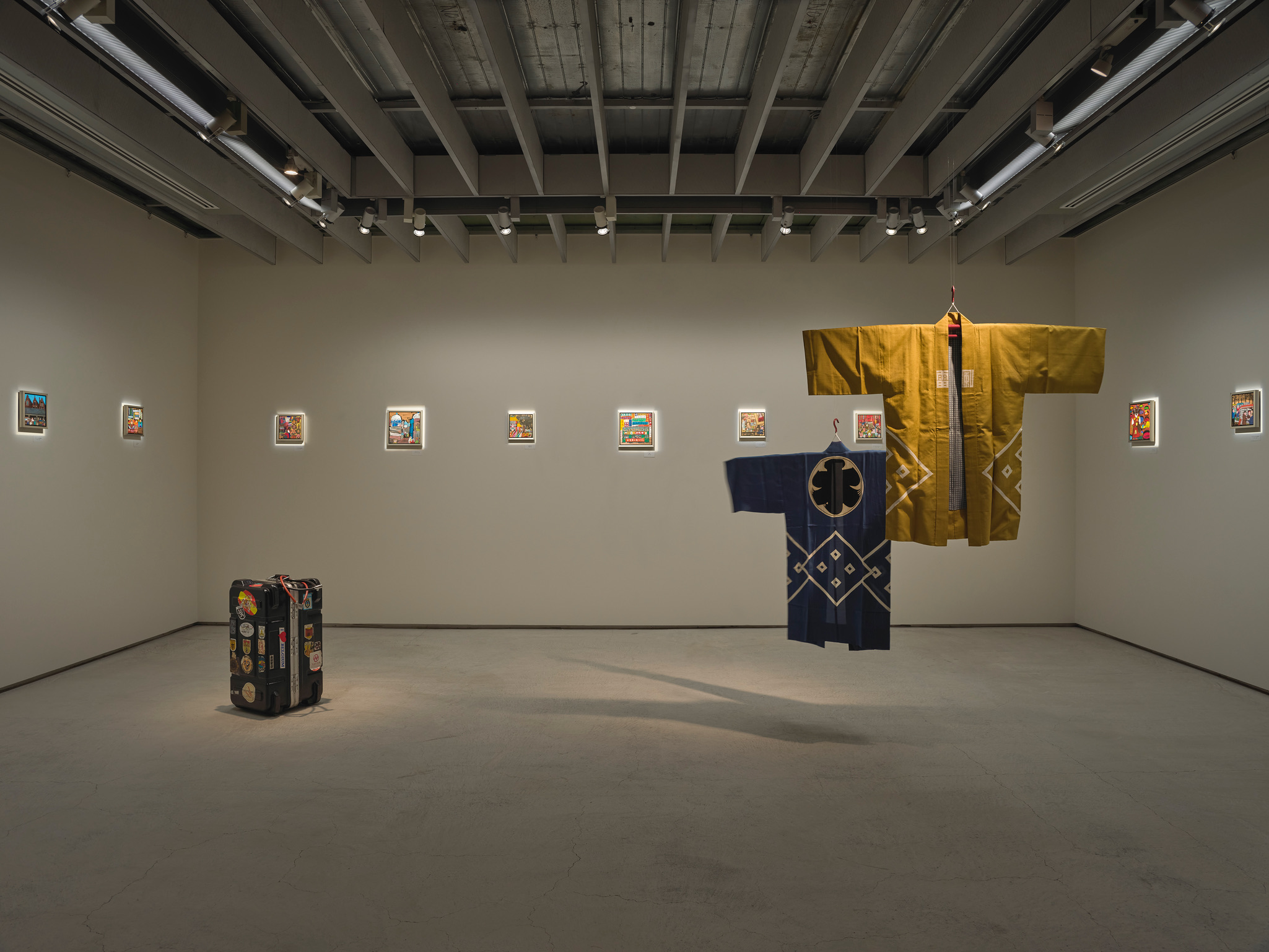

Shibunkaku, August 27 (Thursday)—September 6 (Sunday)
355 Motomachi, Higashiyama-ku, Kyoto 605-0089, Tel: 075-531-0001
Shibunkaku Ginza, September 11 (Friday)—September 20 (Sunday)
5-3-12 Ginza, Chūō-ku, Tokyo 104-0061, Tel: 03-3289-0001
It has been five years since Kida Yasuhiko passed away. Left behind in a corner of his atelier was a group of small paintings, in colors on wooden board, that perhaps more than any of his vast oeuvre encapsulated the liveliness, noises and smells of places all around the world which Kida loved to explore again and again: the bustling scenes of street markets.
Much of Kida’s thought and reflections during his travels can be traced in his custom-made sketchbooks, containing a plethora of details of his trips and particular situations that often can be matched with particular paintings. This exhibition showcases the artist’s works together with his sketchbooks, allowing for the first time a close-up glimpse into his journey to the markets of the world.
* All texts and travel memories quoted from: Kida Yasuhiko, Markets of the World. Kawade Shobō Shinsha (Tokyo, 1993).
Hong Kong! My strongest impression was the colorful neon lights, with trams and double-decker buses running on the road and lots of delicious food, not to mention Victoria Peak, the famous street bars on Lan Kwai Fong, and the numerous night markets scattered around Kowloon. The whole city is alive day and night. The slopes of Hong Kong Island were crazily steep. I was being told the wrong address for my hotel, ending up wandering up and down the bar district aimlessly, an amazing experience. I didn't know the city had two hotels of the same name.
The Chinese markets of Chiang Mai are overwhelming. They say you can find anything to eat here that has four legs unless it’s a table or a chair. Thank goodness there aren't many of the plush Japanese tourist ladies that recently show up everywhere in the busloads. Another saying has it that after a heavy rain, you will find catfish even in the puddles of water on the streets. That’s one of the charming things about this country.
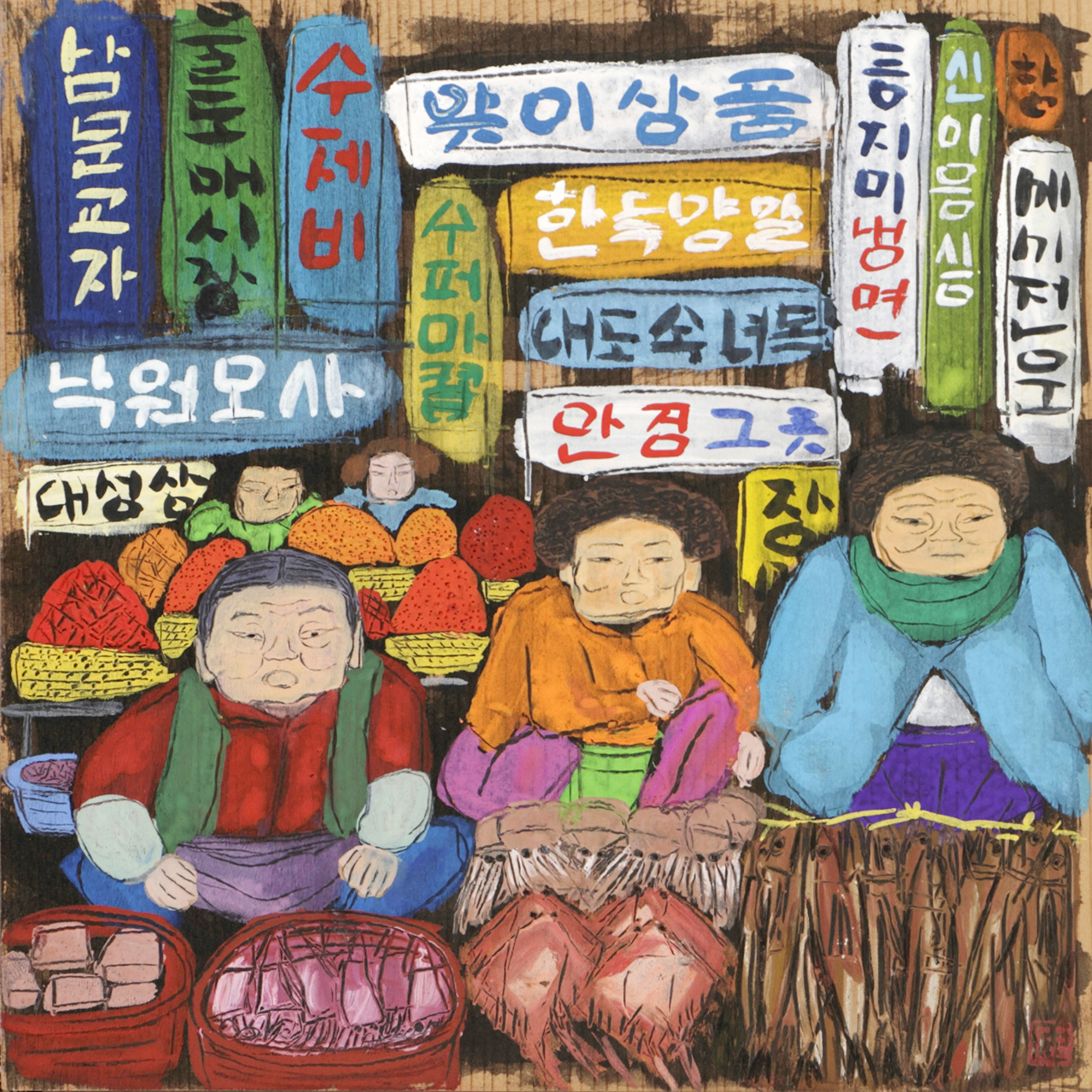
Seoul
Winter in Seoul is freezing cold, but the elderly Korean ladies who run the market's shops are so energetic. Namdaemun and Dongdaemun markets have many hundred years of history, making them a symbol of national pride. It’s wonderful to feel the abundant energy of the Korean people on this colorful market. When night falls, the normal shops pull the shutters down, but the streets bustle with numerous mobile food stalls. There is plenty of inexpensive Korean cuisines, and a common sight is office ladies enjoying raw octopus and drinking shochu next a display of pig heads.
Seoul, South Korea
Colors on board
18 x 18 cm
1993
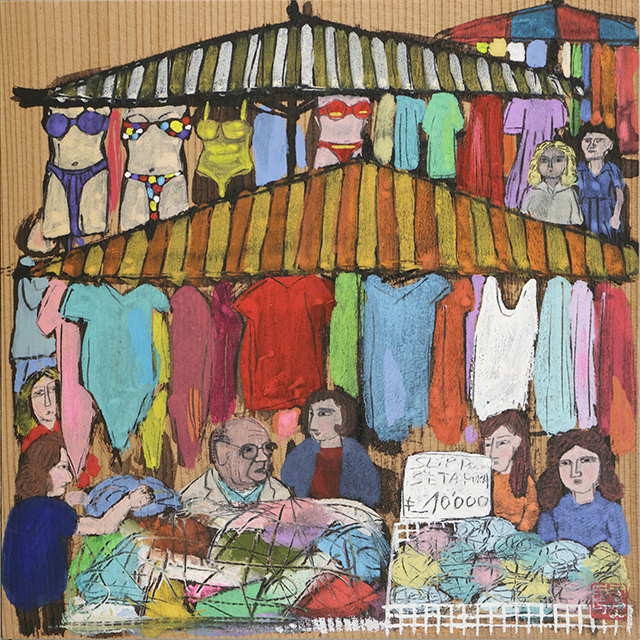
Milan
On Viale Papiniano in Milan there is a market opening every Tuesday and Saturday morning for selling clothes, shoes, and miscellaneous goods. At the place that hosts the Milan Fashion Week, expect to be surrounded by colorful fashion styles and many local visitors, but luckily not the boisterous crowds of Japanese tourists that populate Via della Spiga or Via Monte Napoleone.
Milan Morning Market,
Italy
Colors on board
18 x 18 cm
1992
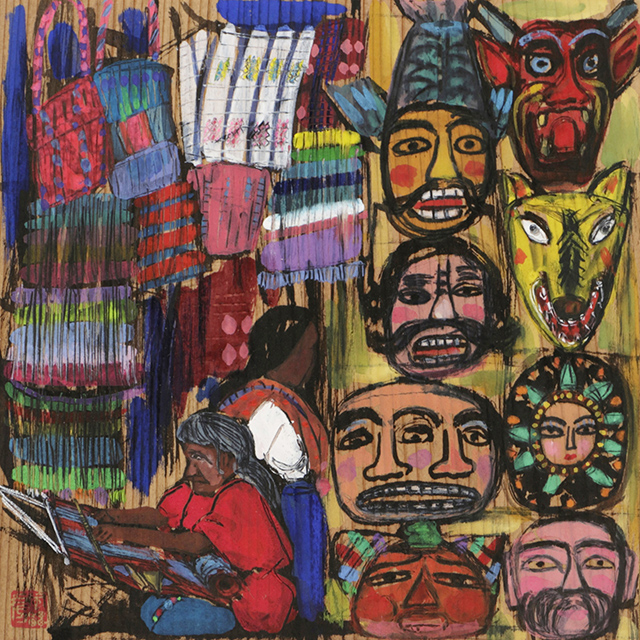
La Ciudadela
The Ciudadela Market in Mexico City is dedicated to folk crafts. In this regard, Mexico is a real treasure trove: colorful masks collected from all over the country, animal dolls, terracotta, musical instruments, leather goods, etc. are all packed in the small shops here. The indigenous people demonstrate how to make traditional fabrics, and there are many guitar workshops as well. Further into the back alleys, there were numerous workshops for metal goods—for my taste, it was too much of all the souvenirs.
La Ciudadela Folk Art Market, Mexico
Colors on board
18 x 18 cm
1992
Portobello Market, I'd say, is typical of the many street markets in London. Sundays are important for buying antiques as there are various markets open in different locations and on different days. Portobello Market itself opens on Saturdays and has the most shops and food stalls among the markets in London. In addition to the increasing numbers of souvenir shops and hip accessories stores, one can find literally anything here—from old Imperial splendor to outright rubbish. There are also many street musicians who play all day long, the ultimate icing on the cake!
Old Delhi reminds me of the glory of the Mughal Empire. The main street that extends from the iconic Red Fort to the east of downtown is called Chandni Chowk, with stalls opening on both sides of the road. In the northern corner of the market there were plenty of simply constructed wooden barracks housing a live pigeon market. It seems to me that these pigeons are a popular as a source of food here.
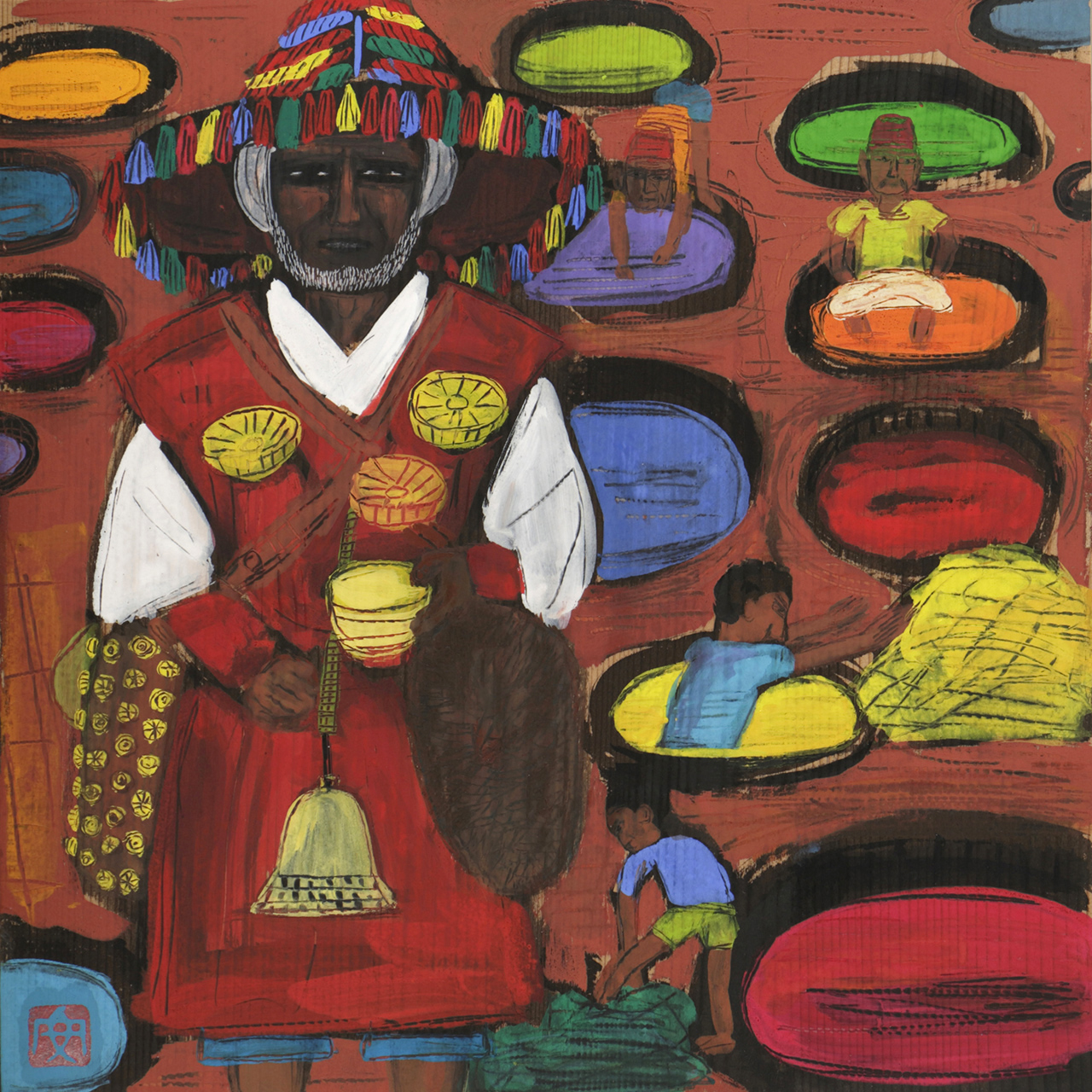
Morocco
Walking along the alleys of Marrakesh there were plenty of freshly colored yarn hung out from the roofs to dry in the sunlight. These colorful scenes unfolded with majestic beauty under the bright blue sky. Children made even more yarn at the side of the road.
Morocco
Colors on board
25 x 25 cm
1990
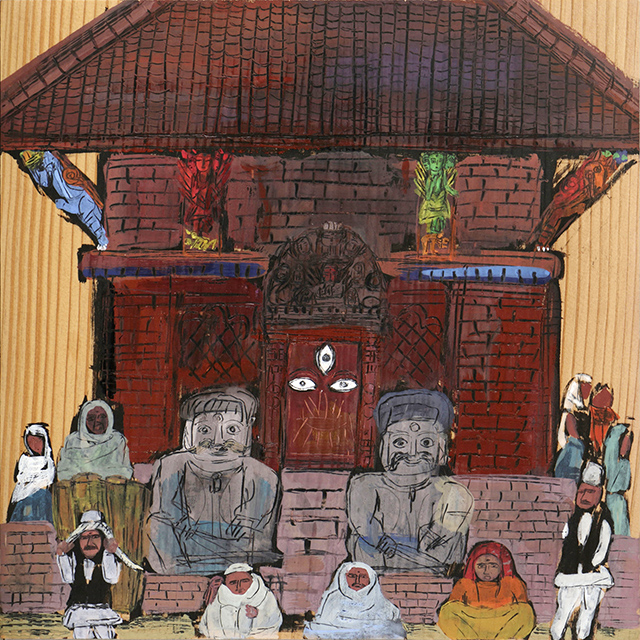
Kathmandu
Taking off from New Delhi, looking out over the Himalayans from the window, I feel relieved to arrive in Kathmandu. I felt my heart beginning to heal after the exhausting trip to India. The word “Kathmandu” actually means “a wooden temple” in the local language. Wooden buildings line up everywhere, and there are many three- or five-storied pagodas. On the markets surrounding the pagodas they sell vegetables and grains. Men with woodman's hatchets hanging from their loincloths selling jars, and then there are shops for dried cow dung used as fuel, and the more valuable firewood for kitchen use.
Kathmandu, Nepal
Colors on board
25 x 25 cm
1990
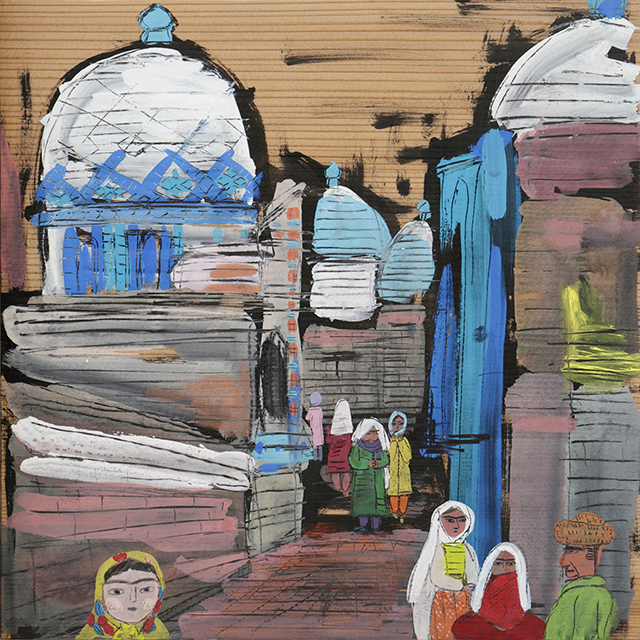
Samarkand
Samarkand, praised by both Alexander the Great and Xuanzang for its beauty, regained its glory during the reign of Amir Timur after the destruction of the Mongolian enemy forces. Located in Uzbekistan, formerly a part of the Soviet Union, it is an erstwhile keypoint of Central Asia, though much if it's beauty now has faded. The mosques are now being restored, yet many of them still look like ruins to me. I heard there are many black markets in front of the blue tiled mosques or in the narrow alleys, so I took heart exploring them. The local guide who provided me with this information kept following at a distance. It seemed the guides are not welcome on the black markets.
Samarkand, Uzbekistan
Colors on board
25 x 25 cm
1990
